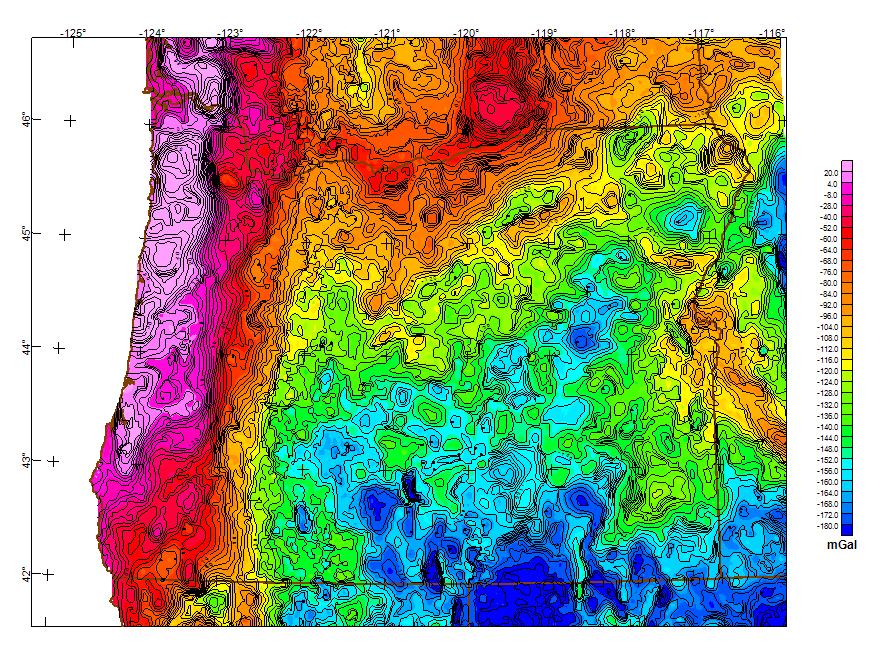Data Series 355
Oregon Complete Bouguer Gravity Anomaly Map
The colors on this complete Bouguer gravity anomaly map (Bankey and others, 1995) represent gravity variations resulting from lateral density variations in the Earth. The more positive anomalies (red colors) occur in areas with average density greater than the Bouguer reduction density of 2.67 gm/cc, whereas the more negative anomalies (blue colors) occur in areas of lower density. The color scale used to create this image is non-linear to best represent the range of values.
The complete Bouguer gravity anomaly grid was generated from 40,665 gravity station measurements in and adjacent to the State of Oregon. The source of the station information is the University of Texas-El Paso (UTEP) / PACES research center. Observed gravity measurements relative to the International Gravity Standardization Net 1971 (IGSN71) datum were reduced to the Bouguer anomaly using the 1967 gravity formula (Cordell and others, 1982) and a reduction density of 2.67 gm/cc. Terrain corrections were calculated radially outward from each station to a distance of 167 km using a method developed by Plouff, (1977) which produces the complete Bouguer anomaly. The data were converted to a 500-m grid using minimum curvature techniques. This compilation does not include any unpublished data. The grid for the complete Bouguer color-contour map is available from the data directory as grvcba.grd |
Version 1.0 Posted August 2008
Contains: gridded data. Refer to the Readme file for more information.
For additional information about this report, contact: Bob Kucks |